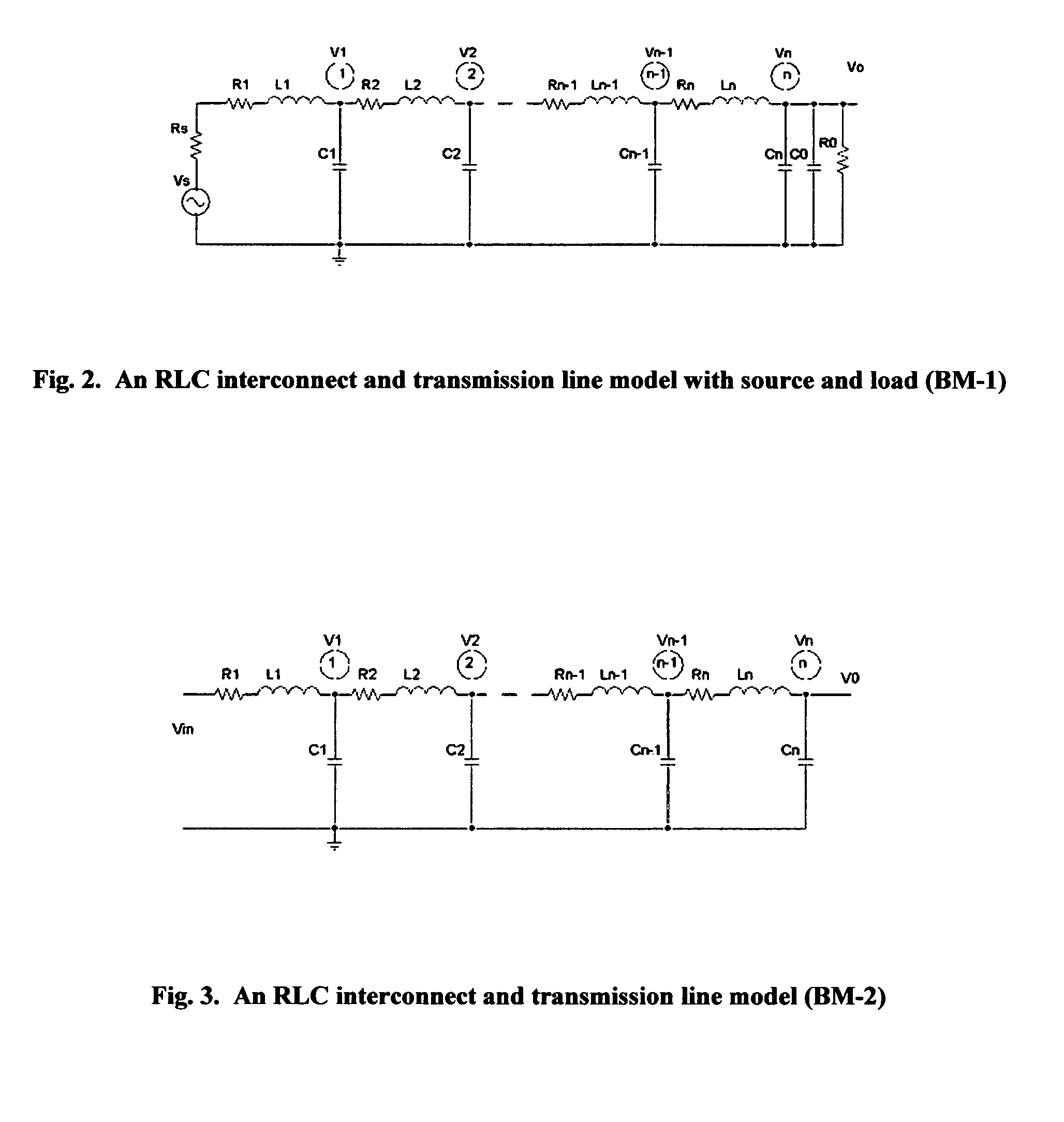Methods to generate state space models by closed forms for general interconnect and transmission lines, trees and nets, and their model reduction and simulations
a technology of state space and closed forms, applied in the direction of instrumentation, program control, cad circuit design, etc., can solve the problems of vlsi circuit design performance, interconnect delay dominating gate delay, and inability to accurately capture the original model
- Summary
- Abstract
- Description
- Claims
- Application Information
AI Technical Summary
Benefits of technology
Problems solved by technology
Method used
Image
Examples
case 1
[0175] Consider an evenly distributed RLC interconnect BM-3 of 0.01 cm long with distribution characteristic data of resistor 5.5 kΩ / m and capacitor 94.2 pF / m. An 200th-order model is used as its original model with R=5.5·10−3Ω and C=9.42·10−5 pF, while the inductor value L is calculated from the light speed in the material and the capacitor value C. It leads to L=2.831×10−13 H. Also, to show some feature of RLC interconnect, this distributed interconnect line has a source resistor Rs=200Ω and a load resistor R0=1MΩ, i.e., a kind of BM-3.
case 2
[0176] Consider a distributed RLC interconnect tree with 6 evenly distributed interconnect branch lines connected as FIG. 1, as an example of a general ITLTAN to show the new methods described above. The branch lengths are as follows: l1=l2=l3=0.01 cm and l4=l5=l6=0.005 cm. Their distribution characteristic data are the same as Case 1, i.e., of resistor 5.5 kΩ / m, capacitor 94.2 pF / m and L=2.831×10−7H / m. Take a branch order of 200 for each branch of branch 1-3, and 100 for each branch of branches 4-6. Thus, branches 1-3 have their parameters Re1=5.5·10−3Ω, Ce1=9.42·10−5 pF and Le1=0.2831 pH, with order 200, i.e., N1b=N2b=N3b=200, and n1b=n2b=n3b=100. Branches 4-6 have the same parameters as Re2=5.5·10−3Ω, Ce2=9.42·10−5 pF and Le2=0.2831 pH, but with order 100, i.e., N4b=N5b=N6b=100 and n4b=n5b=n6b=50. Branch 1 has a source resistor Rs=200Ω. Branches 2, 3, 5 and 6 have their respective load R01 MΩ and load capacitors C0=0.1 F. Select the terminal voltage of branch 6 as an output for a...
PUM
 Login to View More
Login to View More Abstract
Description
Claims
Application Information
 Login to View More
Login to View More - R&D
- Intellectual Property
- Life Sciences
- Materials
- Tech Scout
- Unparalleled Data Quality
- Higher Quality Content
- 60% Fewer Hallucinations
Browse by: Latest US Patents, China's latest patents, Technical Efficacy Thesaurus, Application Domain, Technology Topic, Popular Technical Reports.
© 2025 PatSnap. All rights reserved.Legal|Privacy policy|Modern Slavery Act Transparency Statement|Sitemap|About US| Contact US: help@patsnap.com



